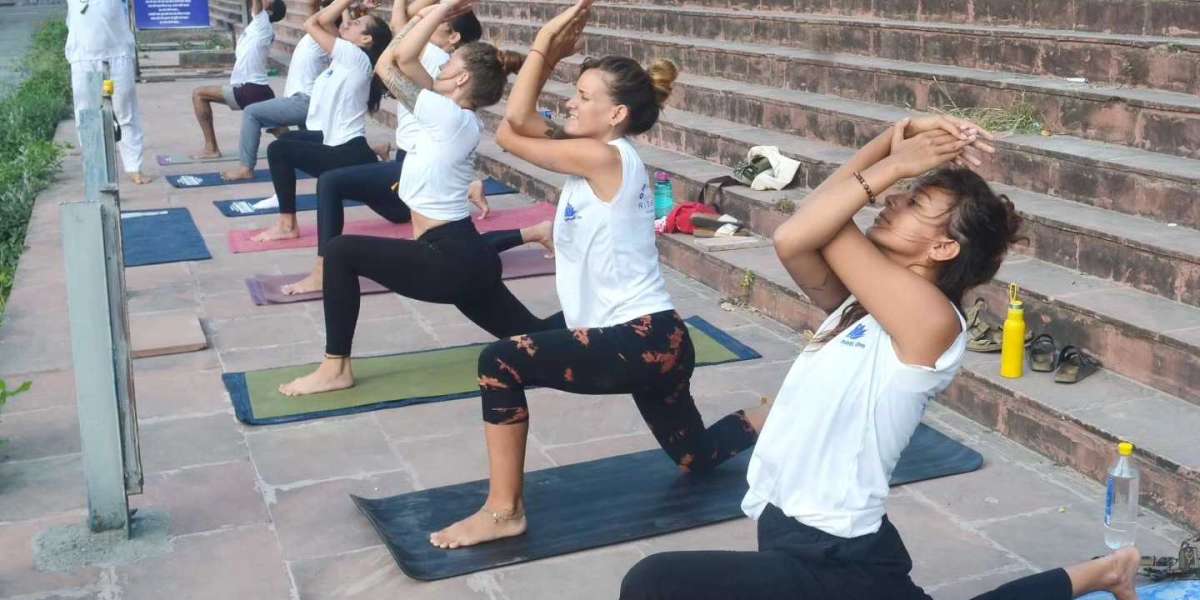Yoga comes in many forms, each offering unique benefits for the body and mind. From the high-energy flow of Vinyasa to the strength-building poses of Power Yoga, there’s a style of yoga to suit everyone. But what is Yin Yoga and how does it differ from other yoga practices? In this blog, we’ll dive into the essence of Yin Yoga, its key benefits, and why it’s become a popular choice for those seeking deep relaxation and flexibility.
What is Yin Yoga?
Yin Yoga is a slower, more meditative form of yoga that focuses on passive stretching, long-held postures, and the deep release of tension in the body. Unlike other dynamic styles of yoga, which involve active movement and muscle engagement, Yin Yoga targets the body’s deeper connective tissues—such as ligaments, joints, and fascia—by holding poses for an extended period of time (typically 3 to 5 minutes or longer).
The practice is all about creating space in the body and allowing gravity to do the work. By holding postures for longer durations, Yin Yoga encourages the body to relax into the stretch, gently lengthening the connective tissues and improving flexibility over time. This approach makes Yin Yoga ideal for people looking to increase joint mobility, release deep-seated tension, and cultivate a sense of inner calm.
The Philosophy Behind Yin Yoga
To understand what is Yin Yoga, it's helpful to explore its philosophical foundations. Yin Yoga is rooted in the principles of Taoism, which emphasizes the balance between two complementary forces: Yin and Yang.
Yin energy is passive, receptive, and cooling. It is associated with stillness, quietness, and the lunar cycle.
Yang energy, on the other hand, is active, dynamic, and heat-producing. It corresponds to the sun, action, and movement.
In Yin Yoga, the focus is on the Yin side of the spectrum, where poses are held for longer periods, creating space for deep relaxation and self-reflection. The practice draws inspiration from traditional Chinese medicine and aims to unblock energy pathways (meridians) within the body, allowing for the free flow of Qi (life energy).
What to Expect in a Yin Yoga Class
A Yin Yoga class is quite different from other types of yoga. Here’s what you can expect:
Long-held Postures: The hallmark of Yin Yoga is holding postures for an extended period—anywhere from 3 to 5 minutes or more. These postures are often passive, meaning that you relax into them rather than actively stretching or exerting effort.
Gentle Poses: The poses in Yin Yoga tend to be seated, reclined, or lying down. Common Yin poses include forward folds, seated twists, and hip openers. You’ll be encouraged to go deep into the stretch, but without pushing yourself to the limit.
Use of Props: Yin Yoga often incorporates props such as blankets, blocks, and cushions. These props help support the body and ensure that you can hold each pose comfortably for the desired duration without straining.
Mindfulness and Meditation: Because the practice is slow and introspective, Yin Yoga provides an opportunity to tune in to your body’s sensations and breath. Teachers may guide you through breathing exercises or meditation techniques to help you stay present during the long holds.
The Benefits of Yin Yoga
Yin Yoga offers a wide range of benefits, both physical and mental. Here are some of the key advantages of this deeply restorative practice:
Increased Flexibility: By targeting the connective tissues (ligaments and fascia), Yin Yoga improves flexibility, especially in areas that are often neglected in more dynamic styles of yoga. Over time, this can lead to greater mobility in the hips, spine, and shoulders.
Enhanced Joint Health: Yin Yoga promotes joint mobility by stretching and stimulating the ligaments and connective tissues around the joints. This can help improve joint function, reduce stiffness, and prevent injuries.
Stress Relief: Yin Yoga activates the parasympathetic nervous system (the “rest and digest” system), which helps to calm the body and mind. The long, slow-paced postures allow you to release stored tension and reduce stress levels.
Emotional Healing: The introspective nature of Yin Yoga can help to release emotional blockages stored in the body. As you hold poses for longer periods, you may notice emotional tension surfacing, which provides an opportunity for emotional release and healing.
Improved Circulation: By holding postures for extended periods, you increase blood flow to the deep connective tissues and joints, which can enhance circulation and overall tissue health.
Better Mind-Body Connection: Yin Yoga encourages mindfulness and deep self-awareness. The long holds allow you to focus on the sensations in your body, helping you become more in tune with your physical and emotional states.
Counterbalance to Active Practices: If you regularly practice more dynamic forms of yoga or engage in high-intensity exercise, Yin Yoga offers a restorative counterbalance. It allows your body to recover, stretch, and release any tension accumulated from more intense activities.
Who Can Practice Yin Yoga?
One of the best things about Yin Yoga is that it’s suitable for everyone. Whether you're a beginner or an experienced yogi, Yin Yoga can be adapted to meet your needs. Here’s why:
Beginners: If you’re new to yoga, Yin Yoga provides a gentle introduction to the practice. It focuses more on relaxation and mindfulness than on physical exertion, making it accessible to all fitness levels.
Experienced Practitioners: Even if you’ve been practicing yoga for years, Yin Yoga can complement more active styles. It helps to lengthen the muscles and release deep tension that may not be addressed in other types of yoga.
People with Injuries or Chronic Pain: Because Yin Yoga focuses on gentle, passive stretching, it can be a great option for those recovering from injury or dealing with chronic pain. The long-held poses allow for gradual, non-strenuous stretches that can aid in healing and recovery.
Anyone Seeking Relaxation: Yin Yoga is ideal for anyone looking to reduce stress, unwind, and cultivate mindfulness. The slow pace and focus on breathwork can be incredibly soothing for the nervous system.
How to Start Practicing Yin Yoga
If you’re wondering how to get started with Yin Yoga, here are a few tips:
Find a Class: Look for a Yin Yoga class at your local studio. Many yoga centers now offer dedicated Yin Yoga classes or workshops.
Use Online Resources: If you can’t find a class nearby, there are plenty of online Yin Yoga classes and tutorials available. YouTube, yoga apps, and streaming platforms offer a wide range of options.
Invest in Props: To make your practice more comfortable, invest in a few basic props like yoga blocks, a bolster, or a blanket. These will support your body during the long-held postures.
Be Patient and Compassionate: Yin Yoga is all about patience and acceptance. Don’t rush through the poses—allow yourself to fully relax into each one. Focus on your breath and be kind to your body.
Practice Regularly: The more you practice, the more benefits you’ll experience. Try to incorporate Yin Yoga into your routine once or twice a week, either as a standalone practice or as a complement to more active styles.







